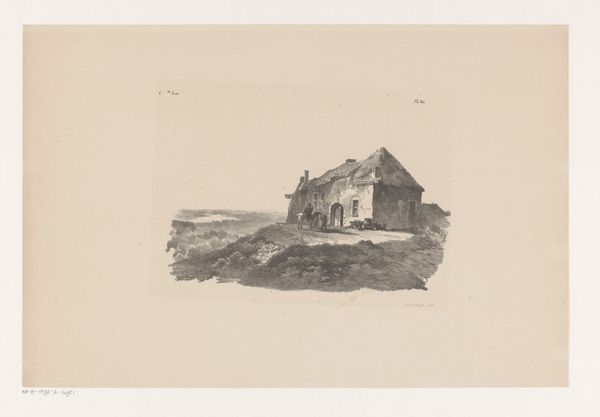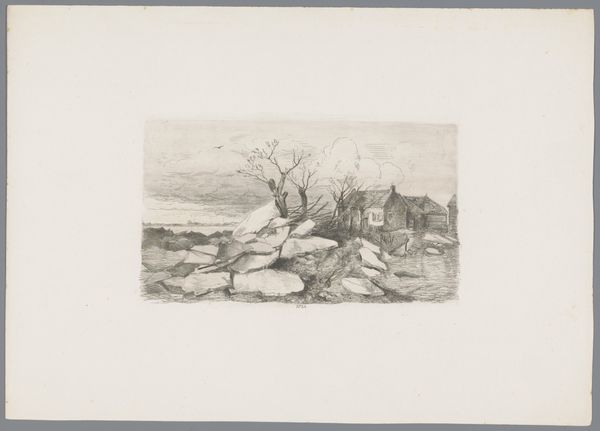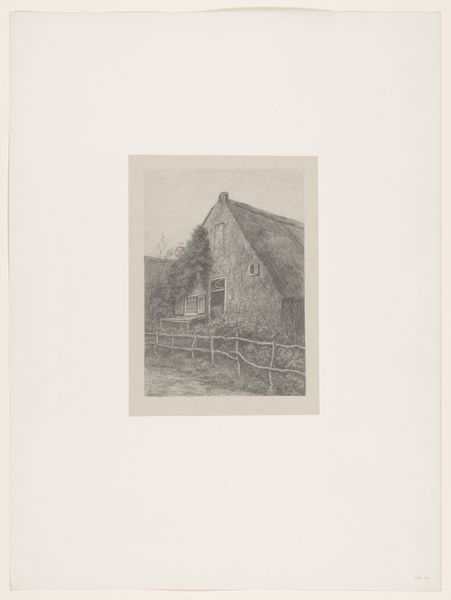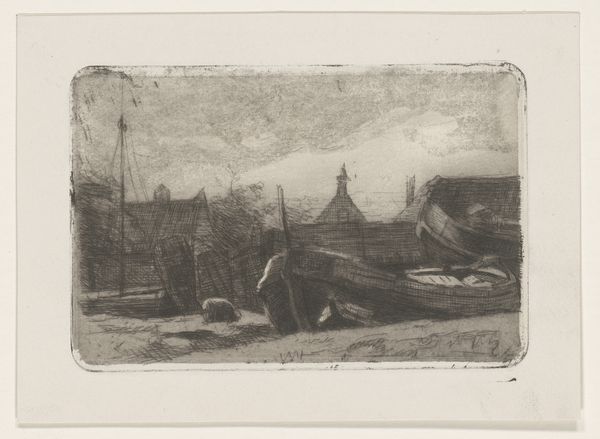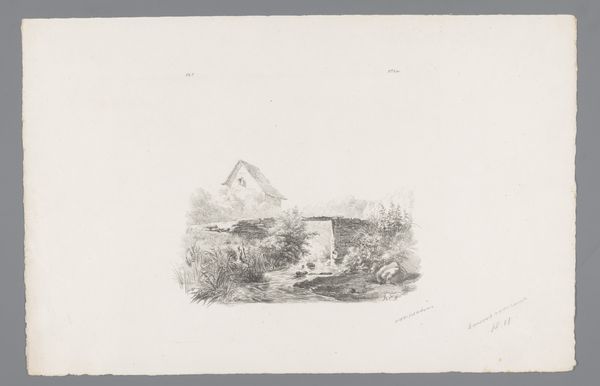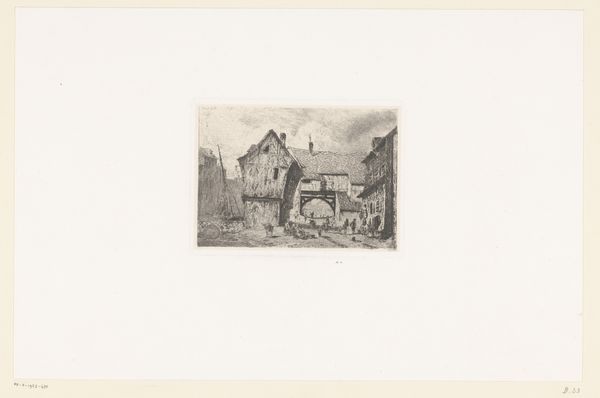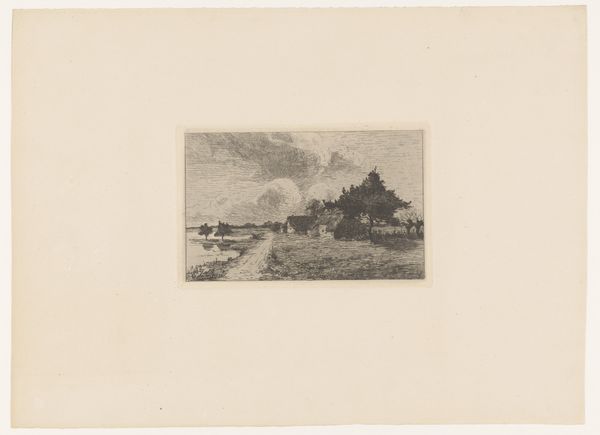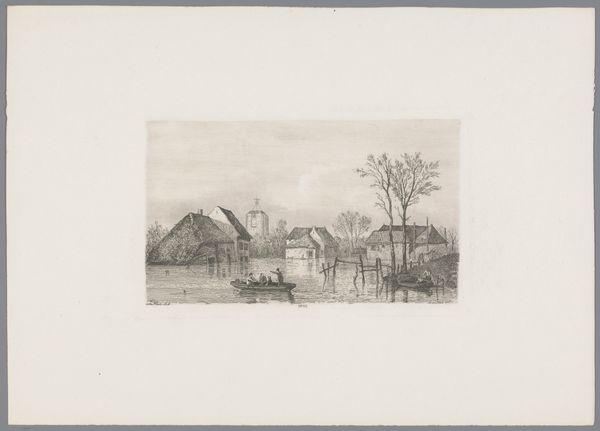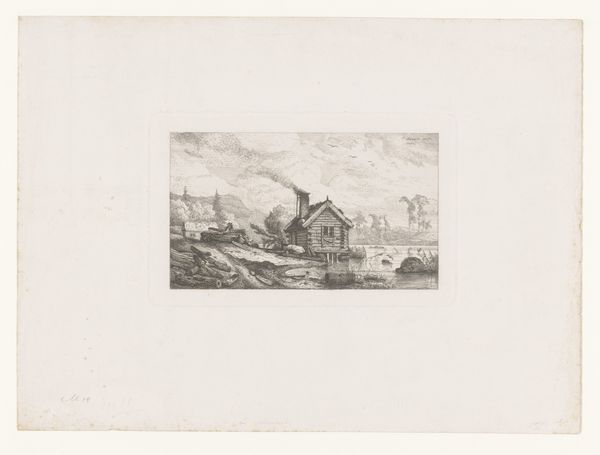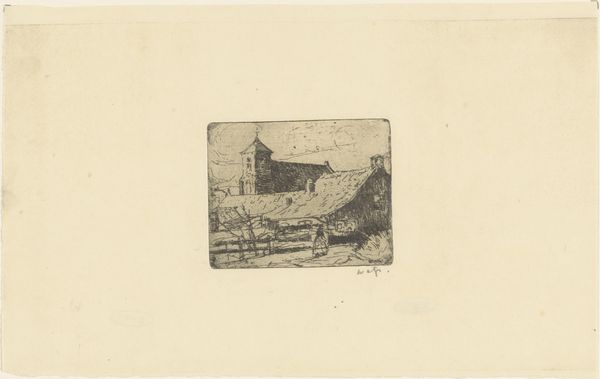
print, etching
#
dutch-golden-age
# print
#
etching
#
landscape
#
genre-painting
#
realism
Dimensions: height 300 mm, width 422 mm
Copyright: Rijks Museum: Open Domain
Charles Rochussen's etching from 1855 presents us with a bleak scene: the aftermath of the dike breach at Lith. Here, water, the very essence of life, becomes an overwhelming force of destruction. The flood is the dominant motif in the image. The pervasive presence of water invites us to consider its symbolic weight. Water, since the earliest mythologies, has always been the symbol of purification, rebirth, but also chaos. Think of the flood in the Bible, or even of the Greek myth of Deucalion and Pyrrha. The image stirs a deep, subconscious anxiety. The flood is not just a physical event but also a psychological one. The etching forces us to confront the fragility of human existence when faced with the raw, uncontrolled power of nature. The flood motif recurs throughout history, reflecting cyclical patterns of destruction and renewal. The cyclical nature of history, of disasters and rebirths, keeps engaging our subconscious, reappearing, evolving, and acquiring new meanings in different historical contexts.
Comments
No comments
Be the first to comment and join the conversation on the ultimate creative platform.
